It’s windy today—gale force. The tent is swaying. Dancing. Bobbing about around me as I snuggle into the glamping bed, fluffy blanket over me for comfort.
We’ve been tenting, you see. Glamping. With proper bed linen and pillows, our favourite fluffy blanket, and cotton rugs on the floor. The tent has two rooms and it’s tall enough for my 185cm husband to stand up in. It feels luxurious.
The tent is from Australia, one of the few things I packed, along with six boxes and two suitcases, when I moved here in 2017. We’ve used it on and off since then but this year decided to sleep in it for the summer.
It’s been relaxing, and calming, and has me connected to the environment in ways I hadn’t thought about for a long time.
One of those connections is the bird life. I normally notice the birds but tent-living has us in the middle of it all. It’s been magical (and slightly irritating at times). We’ve noticed every type of bird that I don’t know—learning all the new bird calls in a different hemisphere isn’t high on my priority list.
Because the nights are so light, birds are awake all the time and generally love flying around in the twilight hours between 1 am and 5 am, hooting, tooting, twittering, or if you’re a cuckoo, coo-cooing intensely.
The cuckoo has calmed down and found a mate at last but his incessant and slightly manic coo-cooing or hoo-hooing was laughable. He (because hubby Googled it and it’s the fellas who’re loud) was incredibly persistent, trying to find a mate for at least six weeks, with only a few short breaks. His calls echoed over the bay and we’d hear him from one direction then a few hours later he’d move to another, trying his luck in another area I guess.
One night I replied to him, which in hindsight wasn’t the best idea because he increased his hoo-hooing frequency to about every second, with the intensity in his cry, palpable. Poor little guy!
You’ll be pleased to know he found a mate and we haven’t heard him for a few weeks.
The wonderfully serene swan family is another joy to observe during tent life. Their four cygnets are brown and fluffy and I’ve found myself counting them when I see them just to make sure they’re all still alive. The parents are attentive and protective, glancing my way as they glide past, just as I might be about to slip into the water or find myself bobbing around enjoying a swim.
They take their brood out for daily trips, teaching them swan life. As they grow they’re out for longer, gliding down and around the bay.

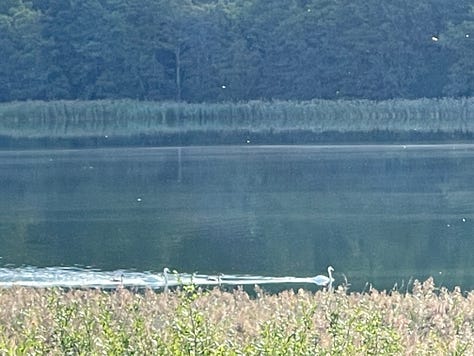
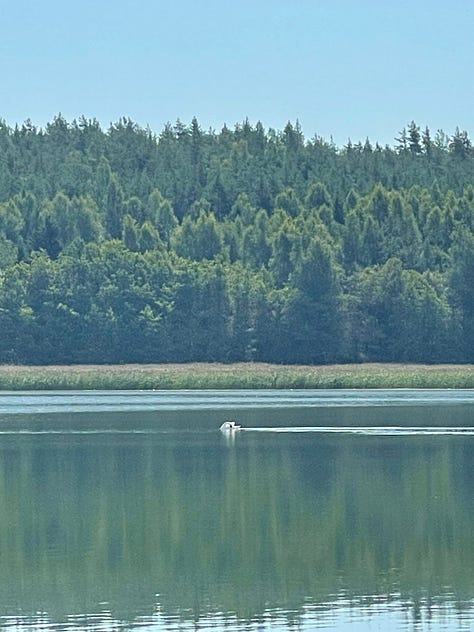
Coming from Australia, where the swans are black, it’s still lovely to see these white counterparts. And I often hear my mum’s voice in my head, “Look at the white swans!” which she exclaims every time she sees a (white) swan on her visits here.
The swans are so different in their parenting style from the cuckoo. But I guess each one has found what works for them.
Swallows, eagles, jackdaws, garden warblers, pigeons, cranes, geese, terns, gulls. They’re all here, not all at once thankfully, but flittering, twittering, tooting and cooing. Going about their birdy business as I sit in my tent, work by the water, or swim. Each makes their presence known in their own way.
Another connection is the spider life. They’re not big, like the ones from home, or poisonous. I figure that I’m hanging out in their habitat so I leave them be. I don’t really want them on my body or face, but I don’t get scared when I see them. They catch all the not-so-lovely bugs, after all, like mosquitos (and let me tell you, they’ve made a meal out of me this summer—I had 50 bites at one point).
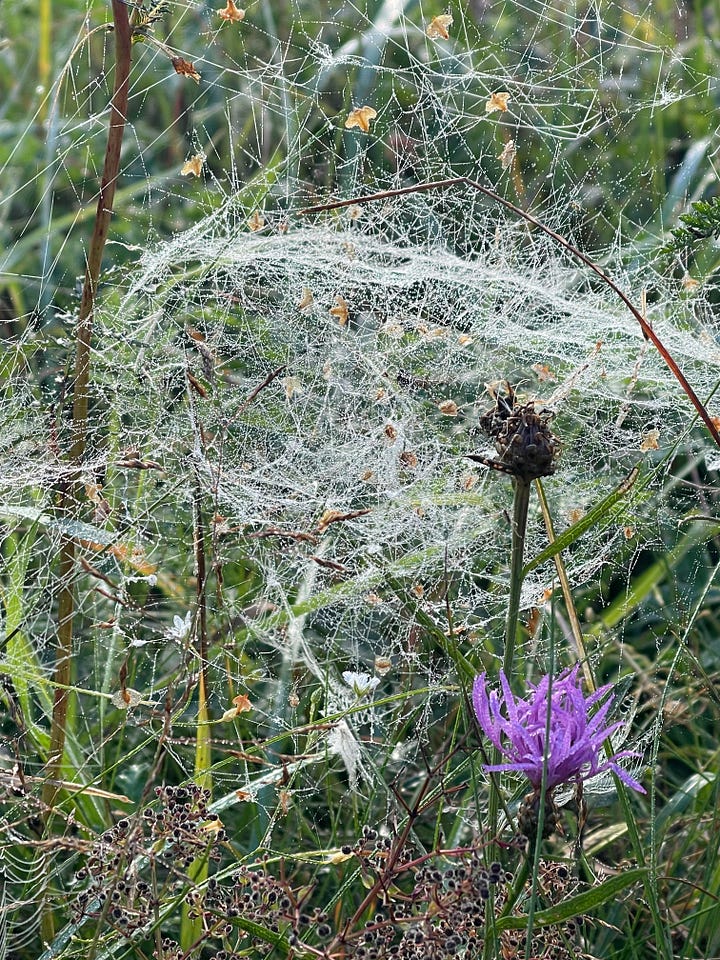

Spinning and repairing, it’s a constant job, and I find watching them is quite calming. I’ve had a chat with the spider who lives on the pontoon, spinning her web between the handrails of the ladder into the water. Her job never ends as we swim every day, breaking the web before we climb down into the water. I’ve told her to move it but she hasn’t taken any notice.
We’ve learned to put one hand out to break any webs when we’re in the boathouse, a habit I remember well from my upbringing in the Australian bush. Spiders seem not to learn from this and diligently build new webs, only to be broken again.
Another lovely part of tenting has been watching the wild strawberry patch. What started as a few small plants just behind the sauna has spread over a huge area, producing the most amazingly flavoured berries. Called ‘smultron’, they’re the original strawberries (or so someone told me).
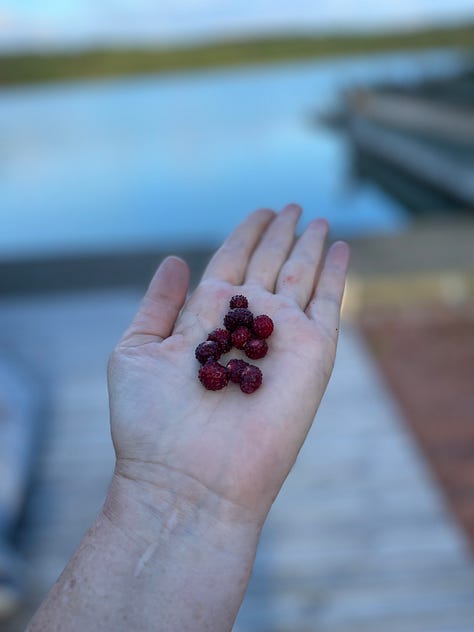

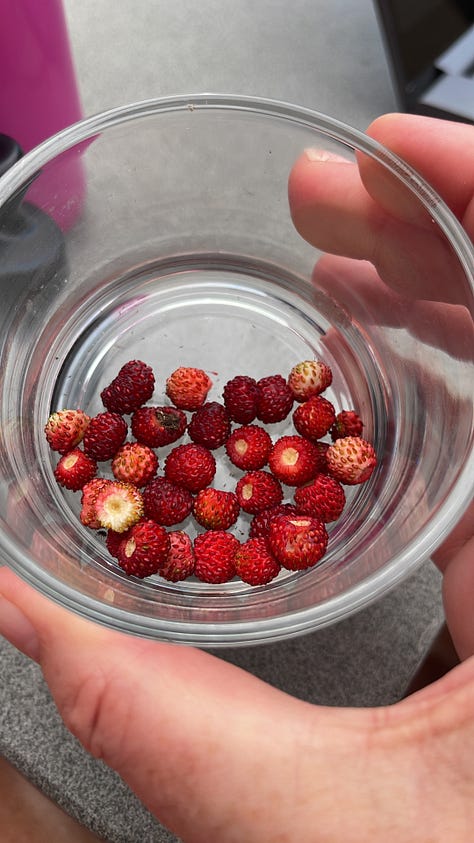
They’re sweet, occasionally sour, small, hide under the leaves, and have vanilla tones. Picking a little handful every few days has been a lovely part of tent-life.
I also noticed a whole spread of raspberry canes (which I once tried to pull out because I thought they were ugly weeds—not in my realm of gardening experience in Australia) this summer.
They produced two raspberries. I can tell you it was the most amazing raspberry I’ve ever eaten (and I even gave the other one to my hubby). I’m hoping for more next year. Fingers crossed.
Our tent-life experiment is soon coming to a close. The tent will be packed away for another year as we move back to our apartment in town. We’ll still come out to this lovely part of the Åland Islands—our sauna always beckons—we just won’t be tenting.
There’s always next year.
Stay well,
Lisa x


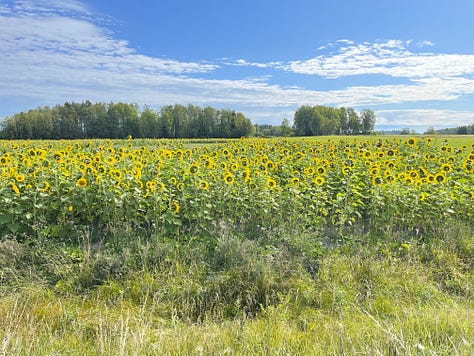
⭐️ Check out my new publication, Flucking Flourishing—particularly if you’re a woman of a certain age, with possible rage, and a tendency towards colourful language!
🧘🏼♀️ Join me in my Monthly Mindfulness Meetup, a time to be mindful together. It’s free and happens the first Monday of every month, with two times to suit multiple time zones. Visit my webpage and scroll down to find the links to register. Or reply to this (or comment below) with where you are on the planet and I’ll send you a registration link.





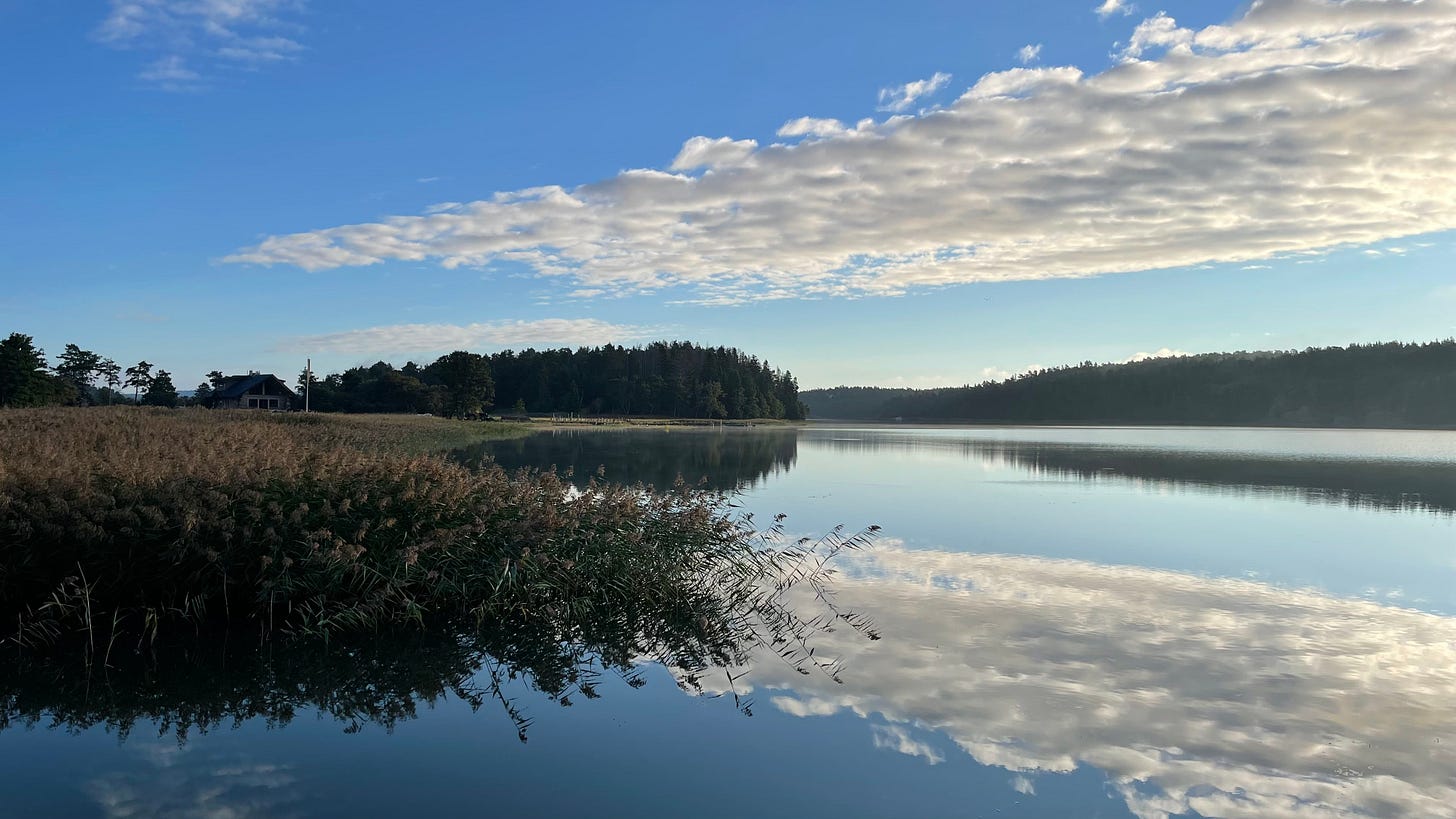

Love this as I am a big camping fan - albeit for a weekend normally with kids. Did you live in a tent all summer?
Always amazing sights and sounds in nature. Lovely.